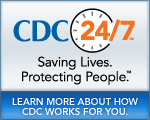MMWR – Morbidity and Mortality Weekly Report
MMWR News Synopsis for January 12, 2012
- Postneonatal Mortality Among Alaska Native Infants — Alaska, 1989a€“2009
- Surveillance for Chronic Hepatitis B Virus Infection — New York City, June 2008a€“November 2009
- CDC Grand Rounds: Prescription Drug Overdoses — A U.S. Epidemic
There is no MMWR telebriefing scheduled for January 12, 2012.
1. Postneonatal Mortality Among Alaska Native Infants — Alaska, 1989a€“2009
Alaska Division of Public Health
Public Information Office
(907) 269-5657
Alaska has more postneonatal infant deaths per 1,000 live births than the nation, and the rate is higher among Alaska Native infants compared to non-Native infants. Many infant deaths that occur after the first month and before one year of age (the postneonatal period) are preventable. Alaska’s postneonatal mortality rate of 3.4 deaths per 1,000 live births during 2006a€“2008 was 48 percent higher than the 2007 U.S. rate of 2.3 per 1,000. Among American Indian/Alaska Native (AN) infants, the Alaska rate of 8.0 per 1,000 was 70 percent higher than the U.S. rate of 4.7. During 1989a€“2009, although postneonatal mortality declined for non-Alaska Native infants in Alaska, annual rates varied greatly for Alaska Native infants and there was no sustained period of decrease. The most common cause of postneonatal mortality in Alaska is sudden infant death syndrome or sudden unexplained infant death, which declined overall but not among AN infants. The Alaska Division of Public Health is initiating several programs in 2012 to address causes and risk factors for postneonatal mortality.
2. Surveillance for Chronic Hepatitis B Virus Infection — New York City, June 2008a€“November 20091
NYC Department of Health and Mental Hygiene
Press Office
(347) 396-4177
Chronic hepatitis B virus (HBV) infection is a leading cause of cirrhosis and liver cancer. Information from routine surveillance about the affected population is limited. As part of enhanced surveillance, from June 2008a€“November 2009 a random sample of patients reported to the NYC Department of Health and Mental Hygiene (DOHMH) with a positive test for HBV was investigated by contacting clinicians. Approximately two- thirds were Asian. Clinicians commonly ordered tests because patients were born in countries with high HBV prevalence, rather than symptoms and elevated liver enzymes, indicating a majority have infection diagnosed before disease progression. Clinicians commonly counseled patients about preventing transmission and notifying contacts, but many were unaware of patients’ hepatitis A vaccination status. In response to findings DOHMH developed several initiatives, including clinician reminders about hepatitis A vaccine. Health departments can use these findings to develop educational materials for clinicians on HBV screening guidelines, vaccination recommendations, and counseling.
3. CDC Grand Rounds: Prescription Drug Overdoses — A U.S. Epidemic
CDC
Division of News & Electronic Media
(404) 639-3286
Prescription drug abuse is the fastest growing drug problem in the United States and has reached epidemic proportions. The increase in unintentional drug overdose death rates in the US is driven by increased use of opioid analgesics. This Grand Rounds presentation in February of 2011 provided promising strategies to prevent “doctor shopping” and reduce inappropriate use of opioids and also improve medical practice in prescribing opioids. Health care systems and state and federal policy makers can take specific steps to address this problem.
- Historical Document: January 6, 2011
- Content source: Office of the Associate Director for Communication, Division of News and Electronic Media
- Notice: Linking to a non-federal site does not constitute an endorsement by HHS, CDC or any of its employees of the sponsors or the information and products presented on the site.
View Press Releases in
Get e-mail updates
To receive e-mail updates about this page, enter your
e-mail address:
Contact Us:
- Centers for Disease Control and Prevention
1600 Clifton Rd
Atlanta, GA 30333 - 800-CDC-INFO
(800-232-4636)
TTY: (888) 232-6348 - Contact CDC-INFO


